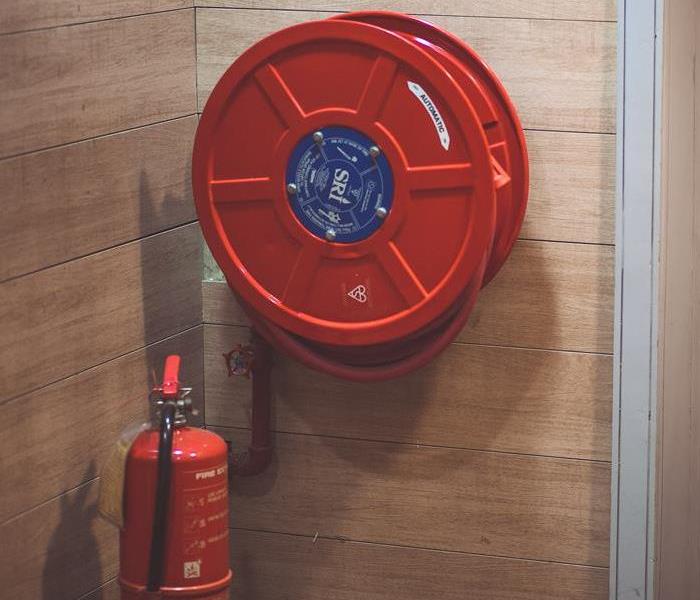Fire Extinguisher Safety Tips
6/26/2018 (Permalink)
Fire extinguishers are an invaluable tool to use against small fires and can also be very effective to protect evacuation routes. According to OSHA, the most common emergency any home or business owner should plan for is a fire.
Homeowners should take the steps necessary to learn how to use the fire extinguisher kept in their home. OSHA requires all employers to train their staff thoroughly on how to use a fire extinguisher correctly as well, and to accurately assess the situation if a fire is to occur. Everyone also needs to be able to properly determine when an evacuation should take place for the safety and well-being of all those in danger. OSHA has established annual training for employees as a minimal requirement for all places of business, and this training is helpful for homeowners as well.
The PASS training technique is recommended:
- P - Pull the pin on the extinguisher.
- A - Aim the nozzle of the hose at the base of the fire.
- S - Squeeze the handle to release the extinguishing agent.
- S - Sweep the nozzle from side to side, directed at the base of the flames until the fire is extinguished.
Once someone knows how to properly operate a fire extinguisher, they should then also be trained to follow fire safety protocol. They should know how to:
- Locate and activate the fire alarm.
- Call the fire department and emergency responders immediately.
- Determine a safe evacuation route that will direct people away from flames, excessive heat, and smoke. They should also know how to keep the route from becoming blocked,
- Use the PASS technique for discharging a fire extinguisher as outlined above, and know the importance of backing away from the area if the fire flares up again.
- Evacuate the area immediately if the fire is still going and the extinguisher is empty, or if the fire grows beyond what can be safely handled without fire department personnel.
Fire extinguishers are made to handle small fires only. Excessive smoke and heat, impaired evacuation routes, and poor visibility are all conditions that can arise quickly. People need to understand that safety comes first and foremost and be prepared to evacuate if the fire grows to excessive levels.
SERVPRO of Brunswick is here to help after fire damages have been sustained in your home or business. We also handle mold remediation and water damage cleanups both large and small. Call us today at (912) 264-6094, or visit our website: SERVPRO of Brunswick






 24/7 Emergency Service
24/7 Emergency Service
